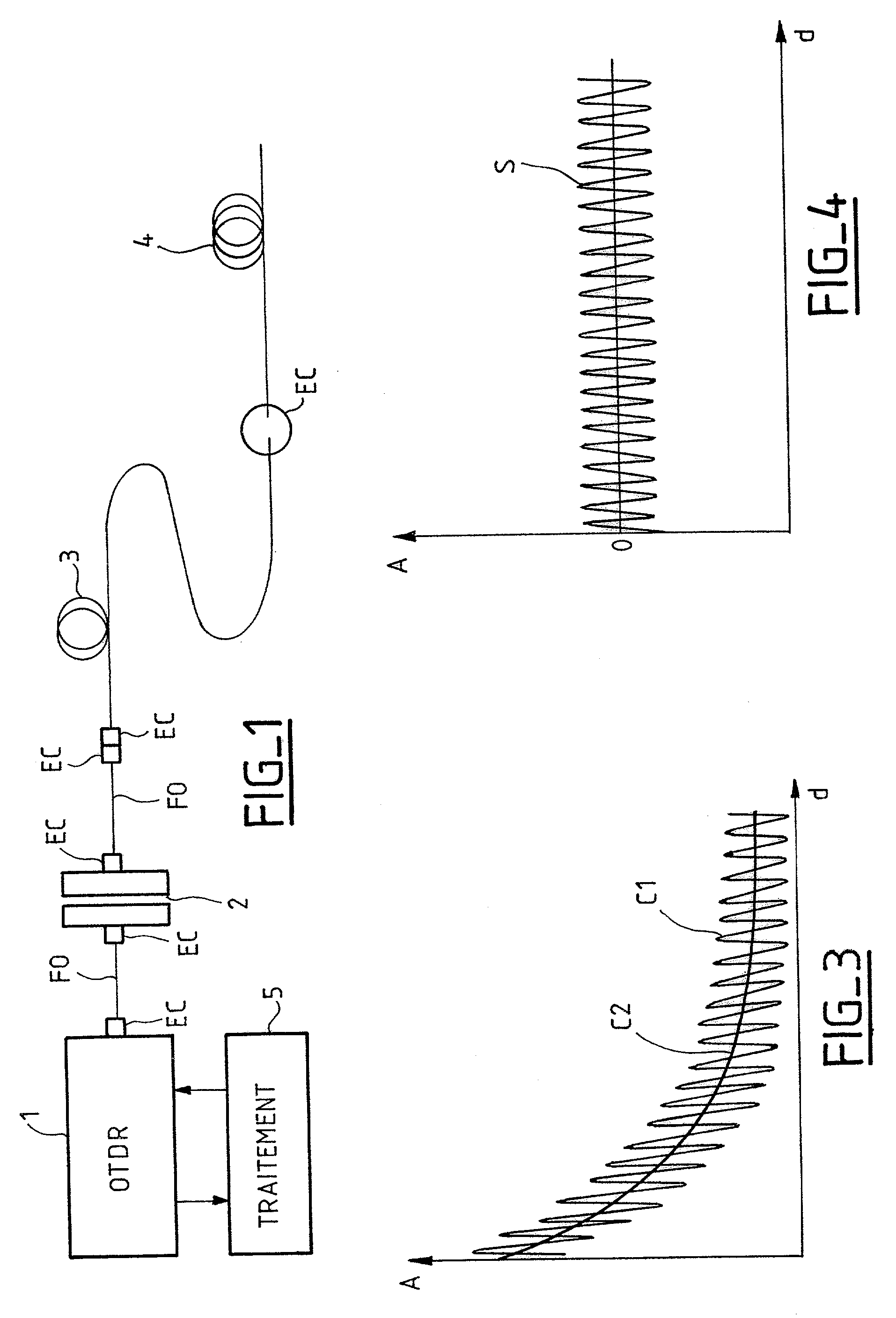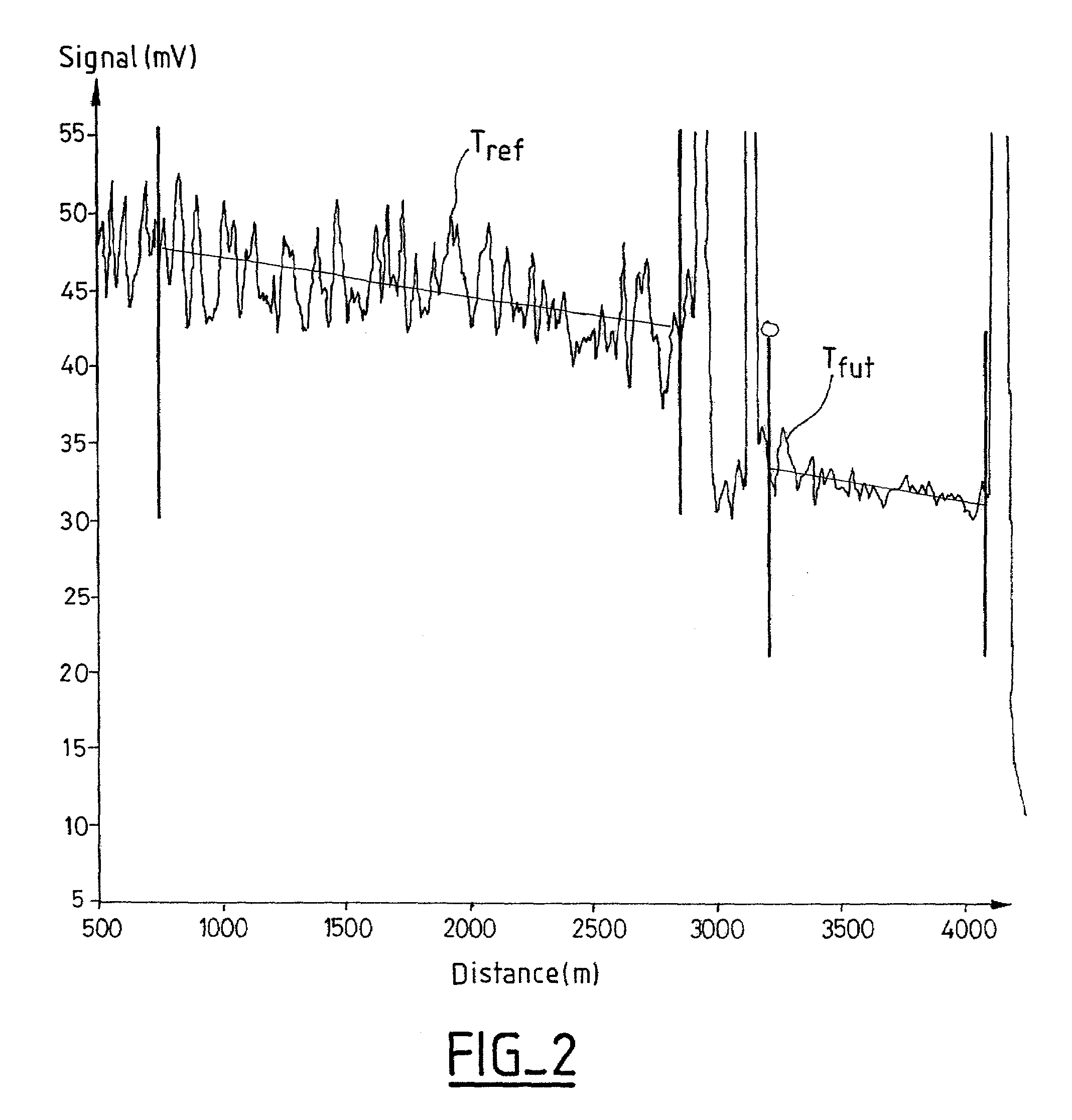Polarized lightwave reflectometry method (POTDR)
a lightwave reflectometry and polarized lightwave technology, applied in the direction of instruments, optical apparatus testing, structural/machine measurement, etc., can solve the problems of limited accuracy and insufficient application for certain applications, and achieve the effect of advantageous compromise and good accuracy
- Summary
- Abstract
- Description
- Claims
- Application Information
AI Technical Summary
Benefits of technology
Problems solved by technology
Method used
Image
Examples
Embodiment Construction
[0021]The invention is described below in greater detail for one of its aspects. In a preferred aspect of the invention, the polarized lightwave reflectometry method is applied to an optical fiber to be tested whose polarization mode dispersion coefficient is to be determined, in particular both for verifying the uniformity of polarization mode dispersion in the optical fiber under test, and secondly for optionally selecting good segments of the optical fiber, i.e. optical fiber segments having a low polarization mode dispersion coefficient. The method includes a step of sending a plurality of linearly polarized light signals into the optical fiber to be tested, preferably two such signals. The light signals present a determined mutual angular offset so that the overall relative noise remains independent of any rotation of polarization in the optical fiber under test. The representations of the light signals on the Poincarre sphere are independent of one another, thus ensuring a con...
PUM
 Login to View More
Login to View More Abstract
Description
Claims
Application Information
 Login to View More
Login to View More - R&D
- Intellectual Property
- Life Sciences
- Materials
- Tech Scout
- Unparalleled Data Quality
- Higher Quality Content
- 60% Fewer Hallucinations
Browse by: Latest US Patents, China's latest patents, Technical Efficacy Thesaurus, Application Domain, Technology Topic, Popular Technical Reports.
© 2025 PatSnap. All rights reserved.Legal|Privacy policy|Modern Slavery Act Transparency Statement|Sitemap|About US| Contact US: help@patsnap.com



